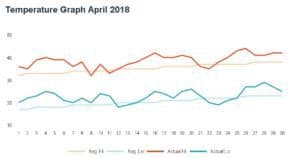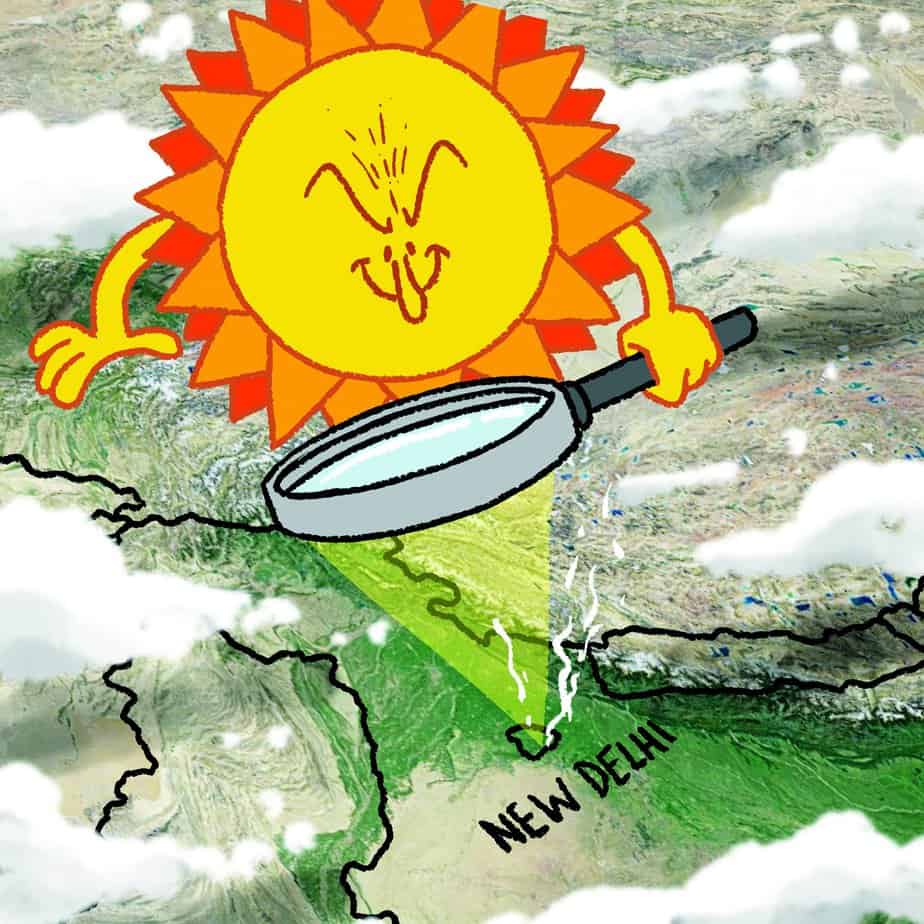Every year, says the met department, temperatures are rising by 1.5% at least. So what are the chances of summer 2018 being a scorcher?
Ranit Das, a resident of Noida, gets up every morning and goes to work in an air-conditioned cab and stays in his air-conditioned office for the next nine hours. The first thing he does after coming home is switch on the air-conditioner in his apartment. Despite this, like every other Delhi-ite, he is looking for one way or another to escape the intolerable heat that will grip the city over the next six weeks.
Sale of air-conditioners across the city is expected to see a rise of over 30-35% this year, even as the cost of production has gone up by 10-15%, as per a report by PTI. Vijay Babu, the business head of LG India, says that there has already been a 52% rise in the number of ACs sold in the first quarter of 2018 as compared to the first quarter of 2017. He also said that this ‘abnormally high’ growth rate is expected to continue in the second quarter of 2018 as well.
 But not everybody can live in an air-conditioned cocoon. Neelav Chakravarti, a resident of GTB Nagar near the north campus of Delhi University, says that he is staying over at his friend’s room in Mayur Vihar since he couldn’t sleep in his own room.
But not everybody can live in an air-conditioned cocoon. Neelav Chakravarti, a resident of GTB Nagar near the north campus of Delhi University, says that he is staying over at his friend’s room in Mayur Vihar since he couldn’t sleep in his own room.
The scorching heat has also changed the habits of a young couple who used to go jogging in the park during the winters. Now, they go to malls to take a walk, up and down the floors. Just as, four decades back, ordinary people went to cinema halls or the American Centre library just to escape the heat for a few hours.
While the standard maximum temperature of the city during the months of April-May should remain between 35-36 degrees Celsius, there were 15 days in April when the temperature crossed the 40- degree mark, with 44 degrees recorded on April 26. Even in the next week, temperatures are expected to cross 40 degrees, according to the forecast by the Indian Meteorological Department. And that, as we all know, temperatures recorded in the shade. Not out under the blazing sun.
According to Kuldeep Srivastava, Director of Indian Meteorological Department, as the season progresses, temperatures will top 45 degrees. “The months of April, May and June will register a temperature of 1.5-2 degrees Celsius more than the average,” he said.
Lack of western disturbances this year, according to Dr Srivastava, is one of the reasons why the temperatures show no sign of going down. Western disturbances are low pressure winds which originate in the Mediterranean Sea. Although it flows across India throughout the year, it is at its peak during the winter. It brings seasonal rainfall and snow in winter to the northern parts of the country. “During the period from December to March, the usual number of these disturbances is 10 on an average. However, this year it has been as low as four, thus bringing very little snowfall and rain. This in turn affected the amount of rainfall in the plains which lead to the rise in temperatures,” the weatherman explains.

So why is the temperature soaring? General Secretary of the National Environmental Science Academy Ajay Gupta says that greenhouse gasses are the culprit. These gases are emitted by the increasing number of vehicles in the streets of the capital, which is more than three times that in the rest of the country, along with emissions from industries. These emissions remain close to the earth’s surface in the lower level of the atmosphere called the troposphere. They trap the sun’s radiation entering our planet and prevents it from returning back into space. This results in tremendous increase of temperature.
As per the statistics gathered from the Transport Department of Delhi, the number of vehicles registered in the city as of 2017 is 1.04 crore. When compared to the year 2012, the total number of vehicles in the city was 74.5 lakh. So, the number of vehicles in the city has gone up by almost 40% in the past five years. The consumption of petrol and diesel in the year 2017 was over 9 lakh metric tonnes, while in the year 2012 it was 7 lakh metric tonnes. Thus, it can be seen that there is a growth of almost 30% in the consumption of petrol and diesel in the last few years.
Adding to this is emissions from the burning of agricultural wastes from Punjab and Haryana. “What should have been used as a biomass is being burned openly. These burnings emit a large amount of carbon dioxide and carbon monoxide which mainly constitutes the greenhouse gases,” says Gupta.
The recent report published by the World Health Organisation (WHO) shows that Delhi stands in the sixth position in the list of most polluted cities in the world with a PM 2.5 level of 143, which is more than double the safe limit of 65.
Gupta complains about the lack of a proper helpline to report any kind of environmental abuse. He explains that there is absolutely no system available in India for reporting any activities that violate environment norms, unlike other countries. “The scorching heat is nothing but the consequences of man-made activities. The only solution is adding more greener spaces to the city,” he concludes.





